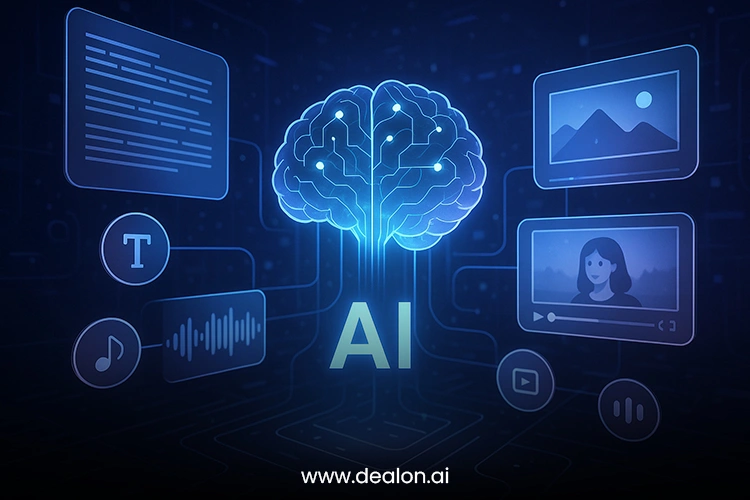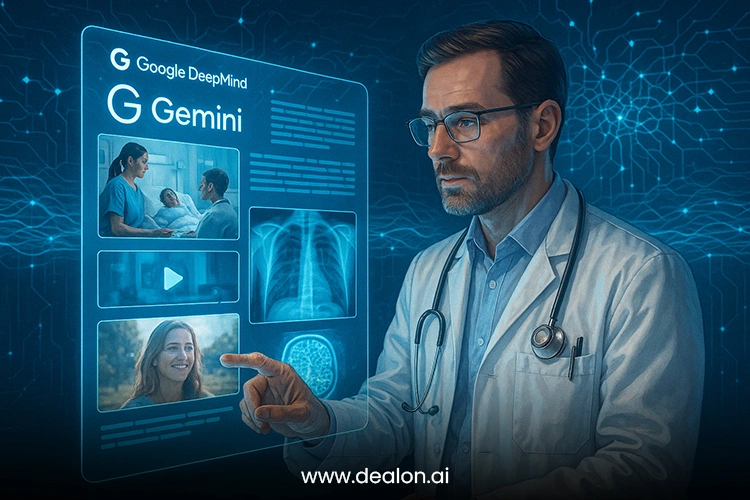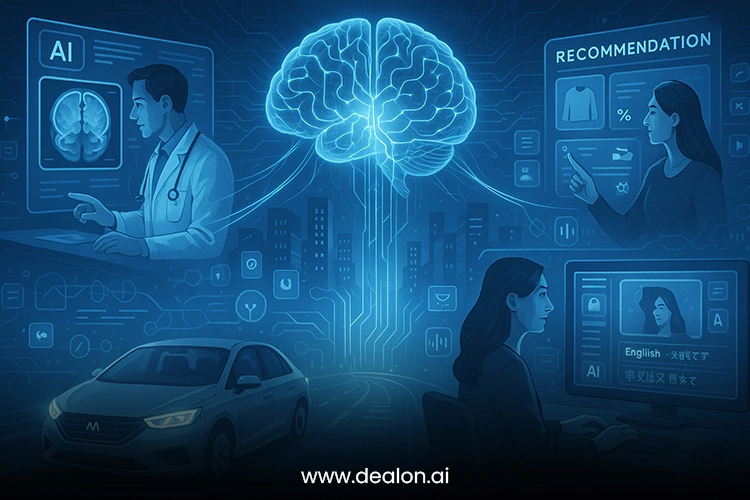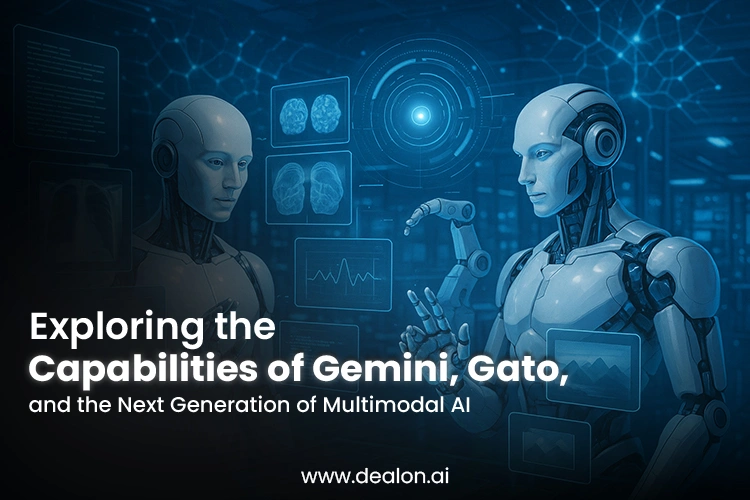Ever since Gemini and Gato debuted, the world of AI has shifted dramatically, and we have never seen advancement quite like this before. Instead of being limited to a singular function like most AI still are, merely communicating with text, audio, or images, the multimodal capability Gemini and Gato utilize is highly advanced, allowing machines to interact with and autonomously respond to multiple data types simultaneously. Given these new improvements, we can expect extreme enhancements in systems, automating and enhancing new industry processes that use sophisticated, tailored machines.
Within these innovations lie systems such as Gemini and Gato. Gemini is from Google DeepMind, and the rest is also from DeepMind. These systems can do more than see texts or images as separate entities. They can merge modalities, which makes them much more helpful in the real world. Take Gemini, for example. It can see and understand images and text at the same time. This means it can perform tasks like generating appropriate descriptions for pictures and answering image-related questions. On the other hand, Gato is unique in the sense that it can perform language and robotic tasks all at the same time without the need to retrain for each specific task.
Just as there might be plenty of applications outside of research—such as in health, supply chain management, or even fun recreational pursuits—across many industries, so too will there be prospective uses of these systems in the future. More advanced, real-life problem solvers will emerge as more sophisticated systems are developed and the cross-augmentation of various types of AI is improved. Unfortunately, this unprecedented development does raise some concerns.
From the growing complexities in decision-making devolved to having to address issues of accountability, ethics, and transparency, many problems will behead in the new AI-dominated future. It is during this dawning period of AI that the seamless merging of various information flows will mark one of the more critical leaps in the development of more intelligent, adaptive, and agile systems of the future.
Also Read: Deepfakes and Data Privacy Technology: Navigating AI’s Biggest Ethical Risk
What is Multimodal AI?

Multimodal AI is an advanced concept that enables an artificial intelligence system to comprehend and analyze data originating from various sources or modalities like texts, images, audio, or videos. Most AI models are created to perform tasks that involve a single kind of input optimally, be it natural language processing or text, or computer vision and images. Multimodal systems, in contrast, are designed to integrate different streams of data and provide a cohesive analysis of the system. Such systems can provide insights, complex decisions, and flexible behavior.
During the thought process, humans actively combine information derived from multiple senses. For example, when one hears a sound, they tend to glance around to localize it. If they see something interesting, they may reach out to touch it to obtain additional information. In the same vein, multimodal AI systems seek to mimic this kind of integration, allowing systems to understand and react to text, images, and audio simultaneously. The ability to integrate and synthesize multiple distinct streams of information is a radical advancement within AI systems, enabling them to perform a greater number of tasks at once.
Multimodal AI amalgamates different types of data to tackle challenges that a single-modality system would find cumbersome. An instance includes a multimodal AI that interprets both images and texts since multimodal AI systems offer an extensive range of features, so the potential applications are plentiful in almost every sector: healthcare, retail, entertainment, and robotics, to name a few.
Gemini: The New Frontier of Multimodal Intelligence

Gemini aligns the border of the new frontier of multimodal intelligence with each level approached through the tools of Google DeepMind. This development, being one of the most sophisticated AI models, captures both texts and images. This allows Gemini to process videos while understanding and generating text. The breakthrough technology provides Gemini with an enhanced comprehension of the world. Due to this, Gemini provides unprecedented AI applications in society.
Gemini’s innovative approach to image and text merging is groundbreaking for AI’s traditional capabilities. It can, for instance, accurately describe complex images. This is groundbreaking for AI in healthcare—Gemini’s image analysis capabilities can aid doctors in completing medical reports and enhance diagnostic capabilities for diseases like cancer. In addition, its ability to interpret radiography images and integrate them with patient information can formulate improved patient treatment recommendations. This enhances patient outcomes.
In video creation, Gemini can provide real-time captioning, analyze videos for summaries, and translate content into different languages. For Gemini’s creators and media companies, Gemini’s capacity to offer coherent descriptions and analyses based on audio-visual content draws on a significant advancement in content creation and accessibility.
Understanding Gemini’s complexities and formulating responses to different complex inputs is one of Gemini’s most remarkable features. For instance, it can not only “see” a scene in a video, but can also “hear” and “read” the spoken or written words contextually framing the scene. By integrating and analyzing various types of data and forming relevant, evidence-based, and dynamic responses, Gemini can engage in intelligent interactions with the users.
Because Gemini can understand text and images with equal proficiency, it can be used in multiple industries. This includes customer service, in which Gemini is used to assist in visual question answering, and logistics, in which Gemini interprets synthesized visual data and text data to help optimize routes.
Gemini integrates always-on multimodal processing, enabling the instantaneous fusion of disparate information types. This fusion allows for the application of even more nuanced artificial intelligence technologies for the resolution of actual domain challenges. Gemini’s ability to link the tangible domain and the digital domain is breathtaking. The broader the sectors that adopt this technology, the more sophisticated the reasoning, interaction, and decision-making of the underlying artificial intelligence will be. This will significantly modify the nature of our labor and our interaction with technology.
Gato: The Multimodal AI
Gato, created by DeepMind, is an exemplar in the growing field of AI that demonstrates a step towards more flexible and adaptable systems that can perform more complex tasks in many different domains. Rather than being stuck in the world of narrow AI, Gato offers an advanced system that is able to operate with varying functions under one system – a general-purpose architecture. Gato’s capabilities of generating and organizing text, commanding robotic systems, controlling them in games, and solving advanced mathematical problems make it an exciting development.
Gato’s most noteworthy feature is its seamless shift between different tasks, along with acquiring and applying knowledge within other domains. This is made possible due to the multitasking learning framework Gato utilizes. It allows Gato to do complex tasks like image captioning, language translation, or controlling a robot, without the need for extensive retraining. Gato’s unprecedented versatility is very crucial as it indicates the potential of a single AI model to be used in different industries and applications. This dramatically simplifies the AI model and reduces the number of systems needed, thus lowering the costs of use and maintenance.
Gato’s single model can, for example, be used in a manufacturing environment to monitor production lines, logistics, and inventory omnipresently, all at the same time. This streamlining of operations would increase the efficiency of the business, resulting in the greater versatility needed in today’s environment.
This efficiency is the same as the savings in computational resources required for the management of individual constructions of AI for each of the different tasks. Such systems would greatly facilitate industries like manufacturing, where a real-time multitasking AI is needed, along with in logistics or customer service, to maintain a competitive advantage.
One key aspect where Gato excels is aiding in real-time cross-functional decision-making. With its ability to make multiple quick decisions to avoid total supply chain failure in the logistics sector, Gato is fascinating. Gato’s abilities in a warehouse environment are remarkable, considering it forecasts stocks, places reorders, suggests cross-chain delivery, and does so while constantly interacting with multiple systems to make real-time calculations. The magnitude of its computational abilities is astonishing. With this, Gato helps make the supply chain compute more efficiently and boosts operational agility.
Gato’s flexibility is not only exhibited by the ability to switch between tasks, but also in the ability to actuate systems in real-time, dynamic environments, like robotics. He can completely control robotic systems such that they sort packages in a warehouse or carry out tasks in surgical environments. This is made possible by the ability of Gato to function in multiple and diverse environments. These capabilities make Gato a top candidate for a scaled Automated AI system for many available markets.
The achievements associated with the Gemini and Gato multimodal artificial intelligence systems are nothing short of extraordinary. Such systems stretch the limits of what their contemporaries can accomplish and lay the groundwork for future advancements. Future systems may utilize more sophisticated forms of sensing.
Apart from the text and vision functionalities of these, the systems also incorporate tactile, olfactory, and thermal modalities. Human-machine interaction is of a far more advanced character. In industrial contexts, AI systems could be trained to recognize and adapt to inevitable temperature fluctuations within a product as part of a quality control process.
The combination of AI and fields such as neuroscience and bioengineering could create more sophisticated forms of AI. Imagine an AI that could receive and respond to physiological and emotional information, creating emotionally sensitive ecosystems that react to the users’ health and brain. Such ecosystems could radically transform personalized medicine, education, and mental health therapeutics by offering devices that are more engaging and therapeutic for users.
Advances in multimodal AI will aim at refining contextual awareness. As AI systems learn to process multiple streams of signals at the same time, interpreting the context will be of more importance. A more sophisticated system of multimodal AIs may show advancement regarding AI expression.
For instance, they may furnish more sophisticated context-based assistance for customer support interactions by discerning speech, intonation, expression, posture, and gesture. Such AIs would dramatically improve customer satisfaction because they would more accurately tailor support to the customer’s needs. Also, such an advancement would increase the value of AI to people.
As systems advance, there will also be an increasing concentration on adherence to ethical considerations as well as maintaining transparency. The growing demand for explainability and accountability regarding handling a rising volume of sensitive and personal, complex data will be dealt with by multimodal AI systems.
The onus will be on AI systems to clarify their rationale, in a manner that is defensible and readily comprehensible, to foster trust and/or demonstrate compliance with privacy legislation. About WI, growing concern underscores ethics and transparency, as the stakes of the systems in question increase in relation to the sphere of influence, for example, the case of healthcare, finance, and even law enforcement.
Machines will also demonstrate enhanced capabilities within the paradigm of adaptive learning, whereby their decision-making and interactions improve over time, based on a set of feedback coupled with additions to the data. With systems not merely viewed as tools, but ‘intelligent’ partners with the capacity to assist in complex decision-making, interactions with humans augur well for enhanced human-computer engagement.
Real-World Applications of Multimodal AI

The introduction of multimodal AI has impacted the shopping experience of consumers in retail and e-commerce sales. Based on the analysis of an accompanying review and the corresponding image of the product, AI systems are capable of customized product recommendations. These systems optimize predictive and personalized AI marketing by synthesizing customer data collected throughout their digital journeys, such as web browsing, buying behavior, and social networking. This application of cross-channel marketing enables businesses to craft more precise and relevant marketing messages, thus lifting marketing success rates as well as customer value.
Multimodal AI is also helpful in the entertainment and media industries. Content creation, editing, and distribution become easier when AI systems can work with both video and text. For instance, AI enables video content creators to include automated subtitles and/or translations in different languages in real time, which helps to monetize their content in overseas markets. In addition, AI systems can personalize suggestions of movies and TV shows by summarizing them using the viewer’s watch history and content preferences.
Last but certainly not least, we see the inclusion of multimodal AI technology into autonomous vehicles improving their self-driving capabilities through more intelligent context-aware navigation. Such vehicles process streams of complex information, including, but not limited to, real-time instructions, environmental conditions (road, weather, climate, and obstructions), and real-time cants of moving objects, to enhance driving comfort and safety. Attending to several streams and parameters simultaneously while driving, the AI reduces the chances of accidents and offers seamless navigation, thus giving the passenger an improved driving experience.
Conclusion
These days’ instruments of technology like Gemini and Gato multimodal AI are said to deeply transform parts of the economy and societal life by creating systems that analyze and synthesize diverse types of information like texts, images, videos, and context, across different modalities. Technology’s positive impact is already being felt across healthcare, organized retail, entertainment, autonomous systems, and the AI industry because of enhanced workflows, increased personalization, and advanced decision-making systems.
The further development of these innovations will likely augment AI’s embedded ability to improve and harmonize the everyday life of citizens by addressing everyday challenges. It is the unsolicited intelligent, flexible, and human-like AI technology to dynamic environment interactions that is sure to change borderless daily life for the better.

